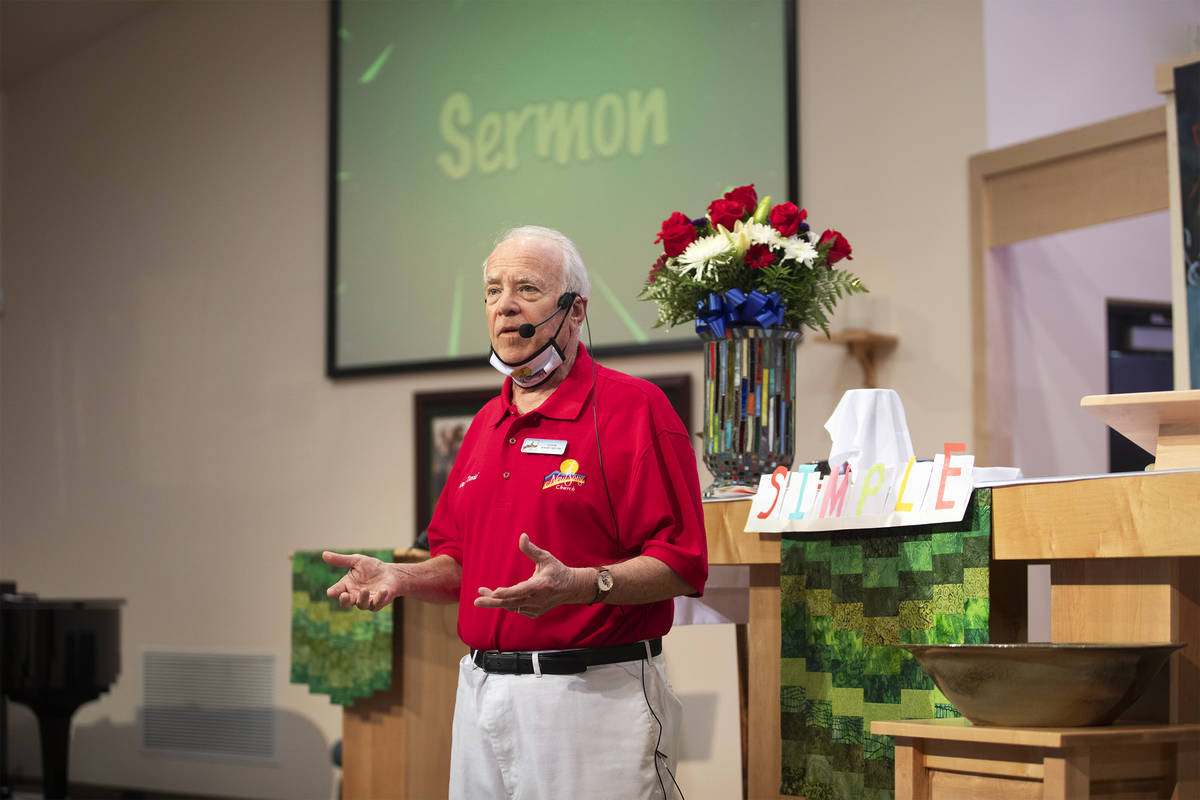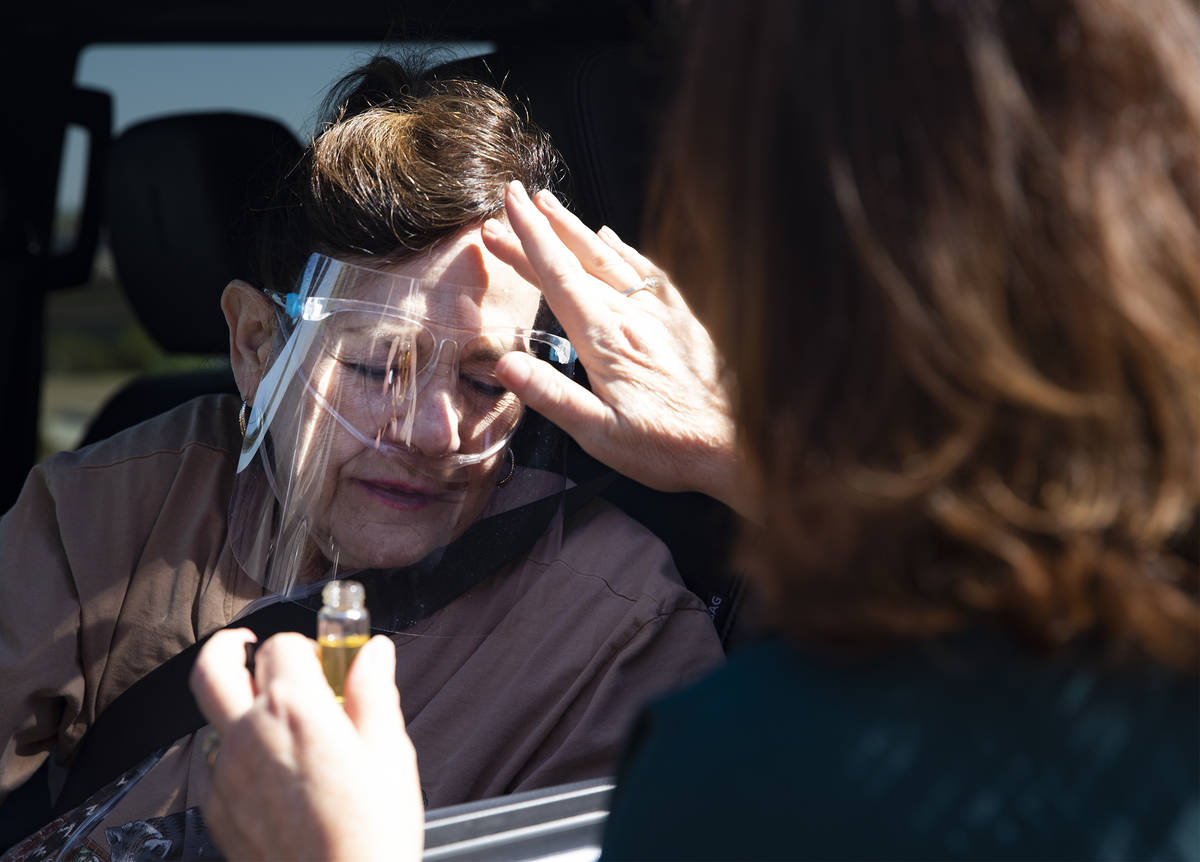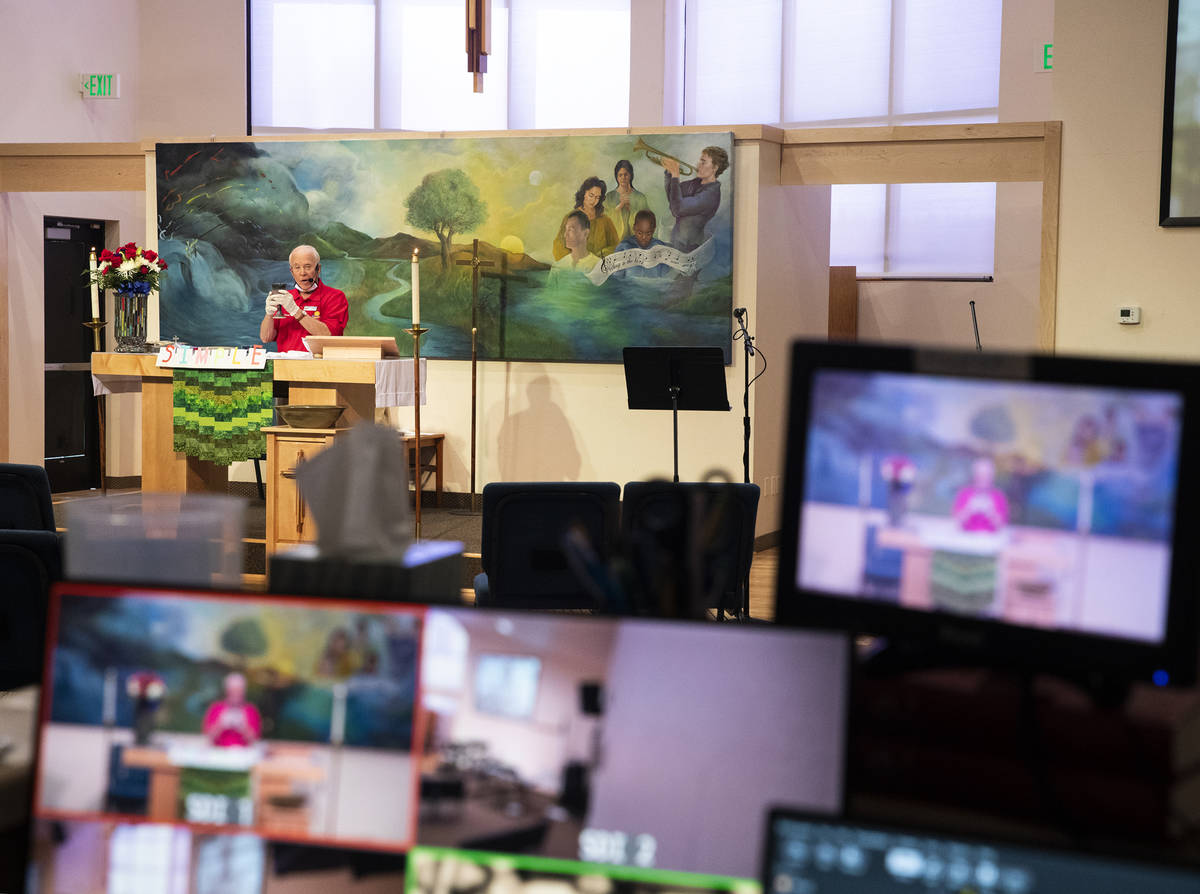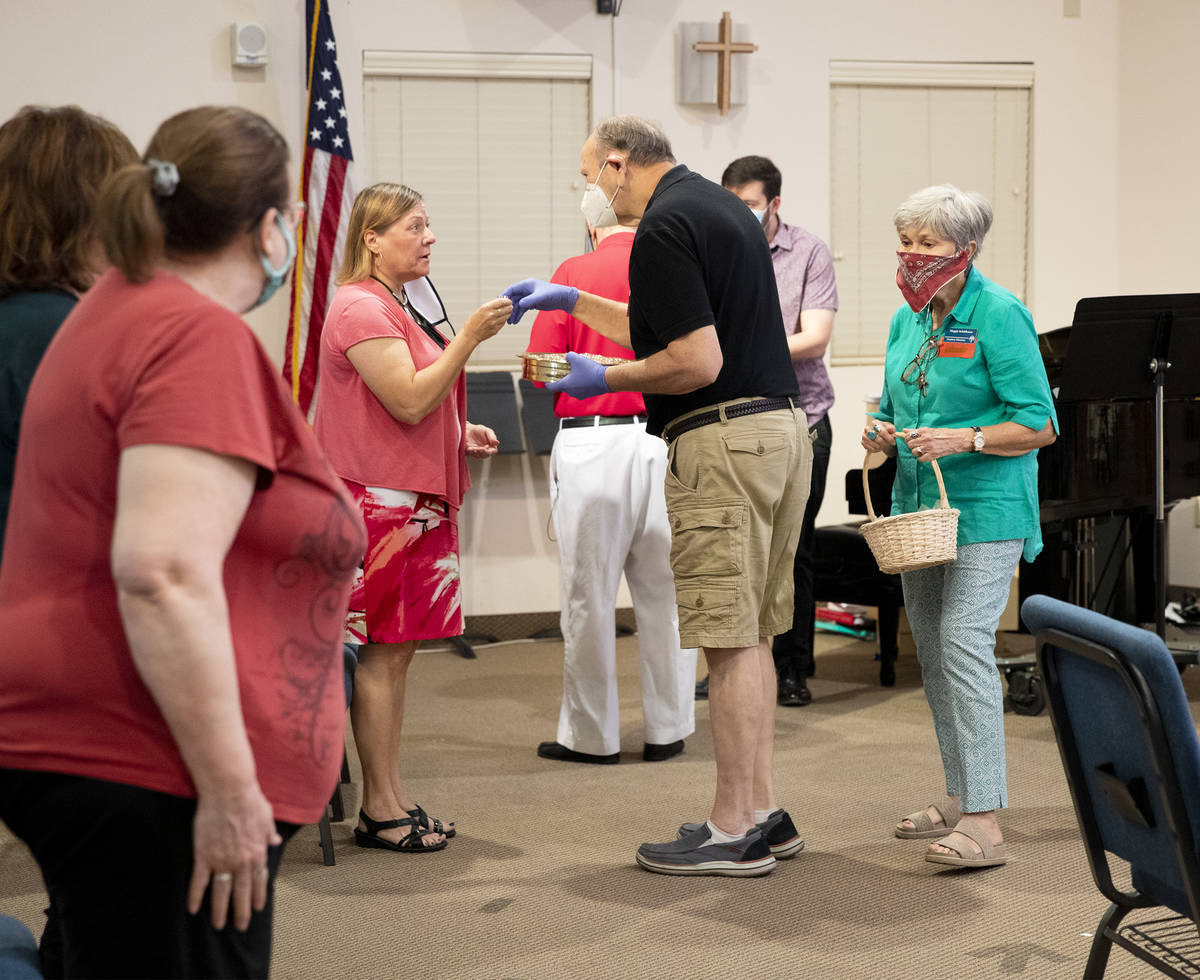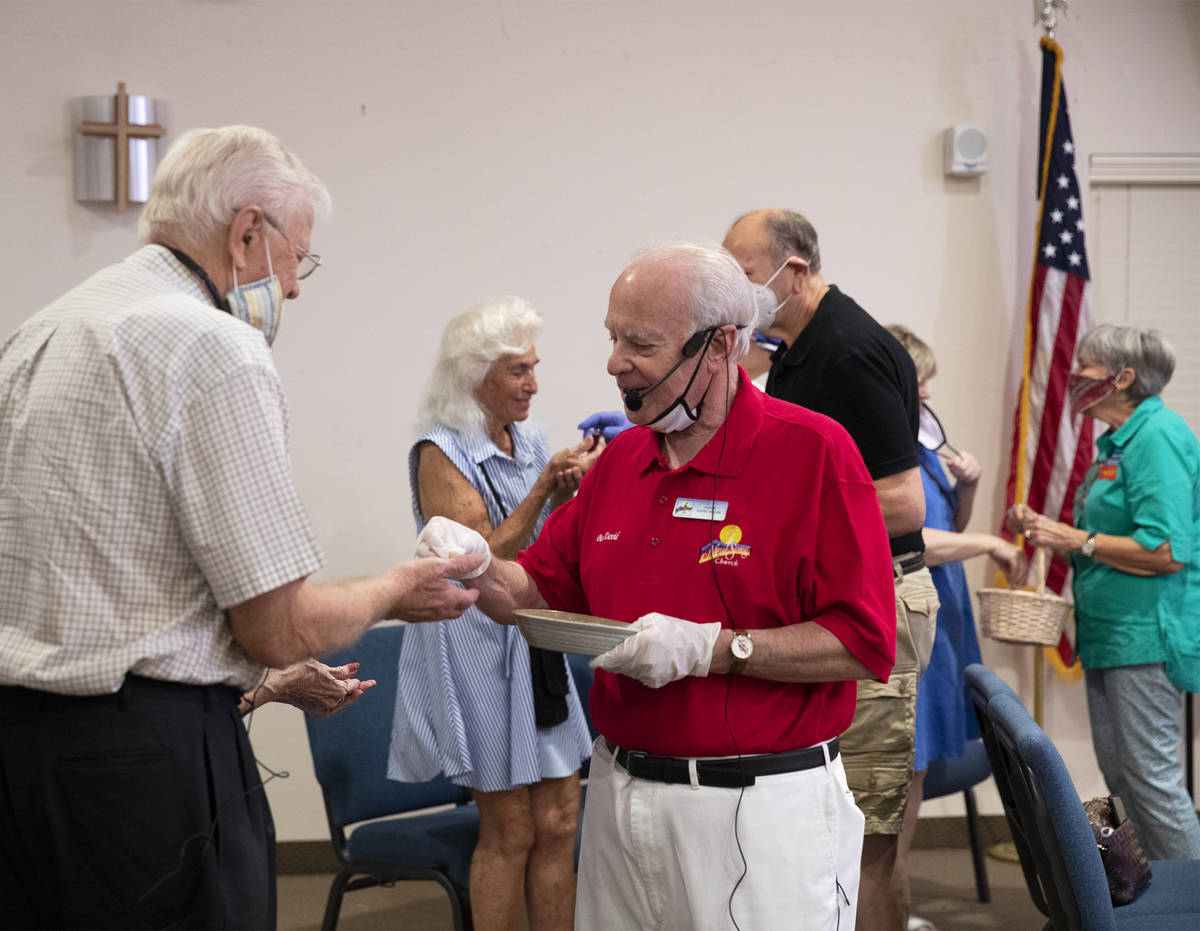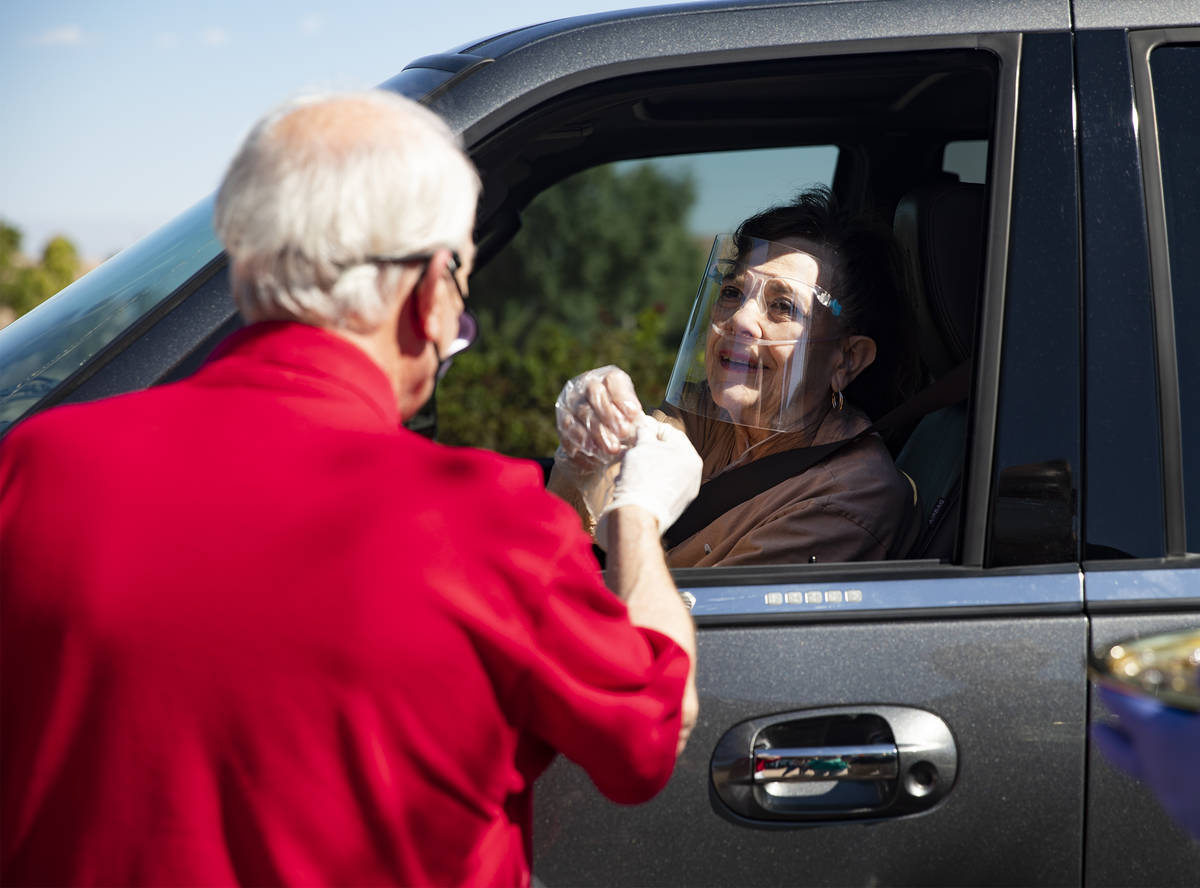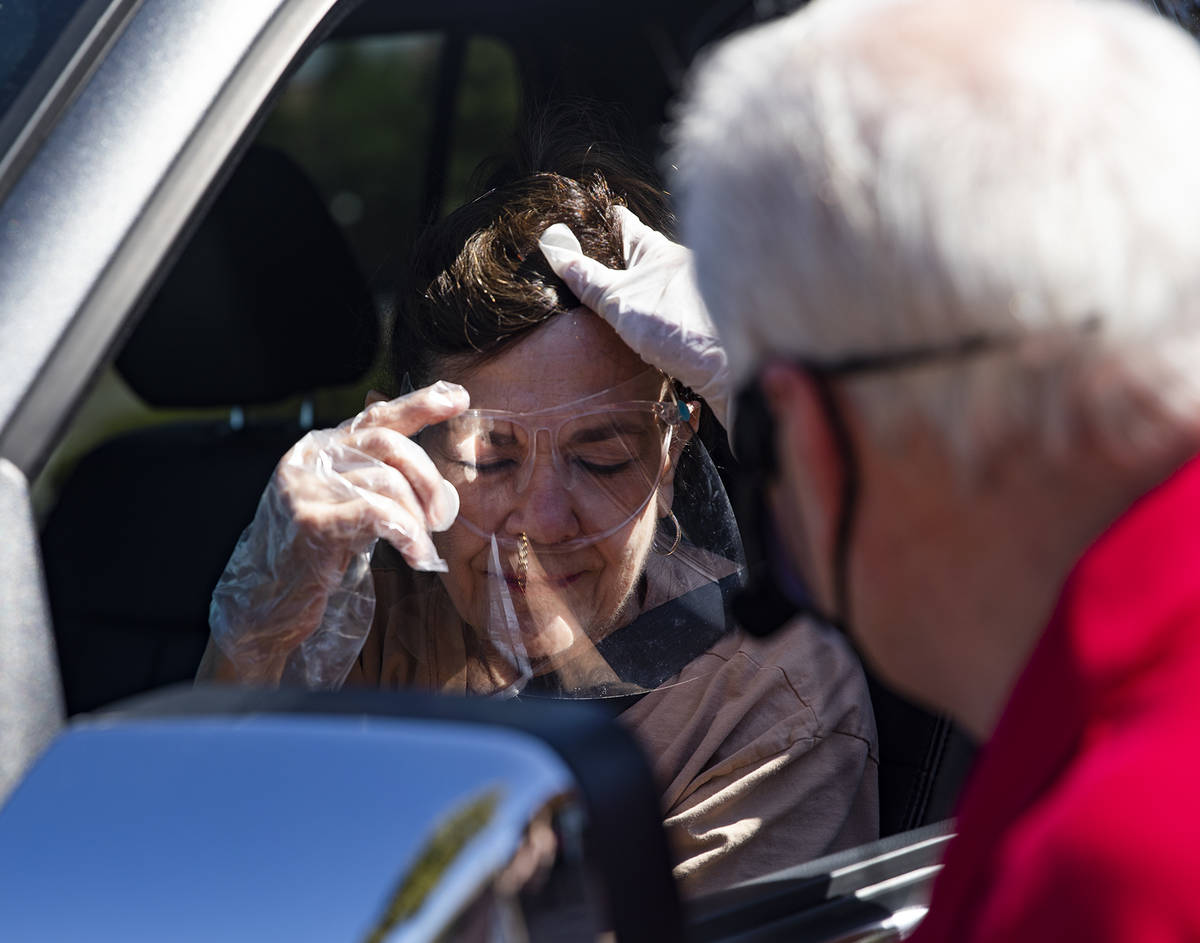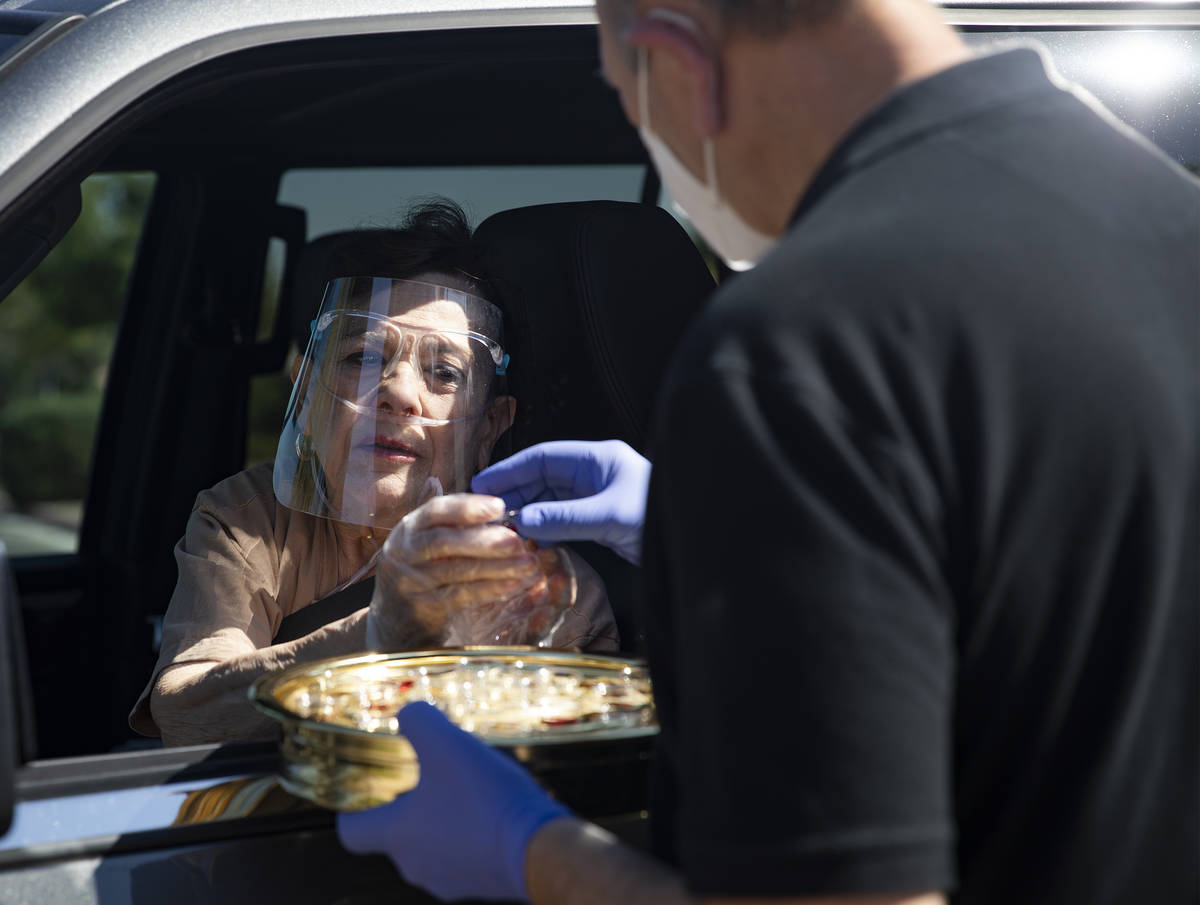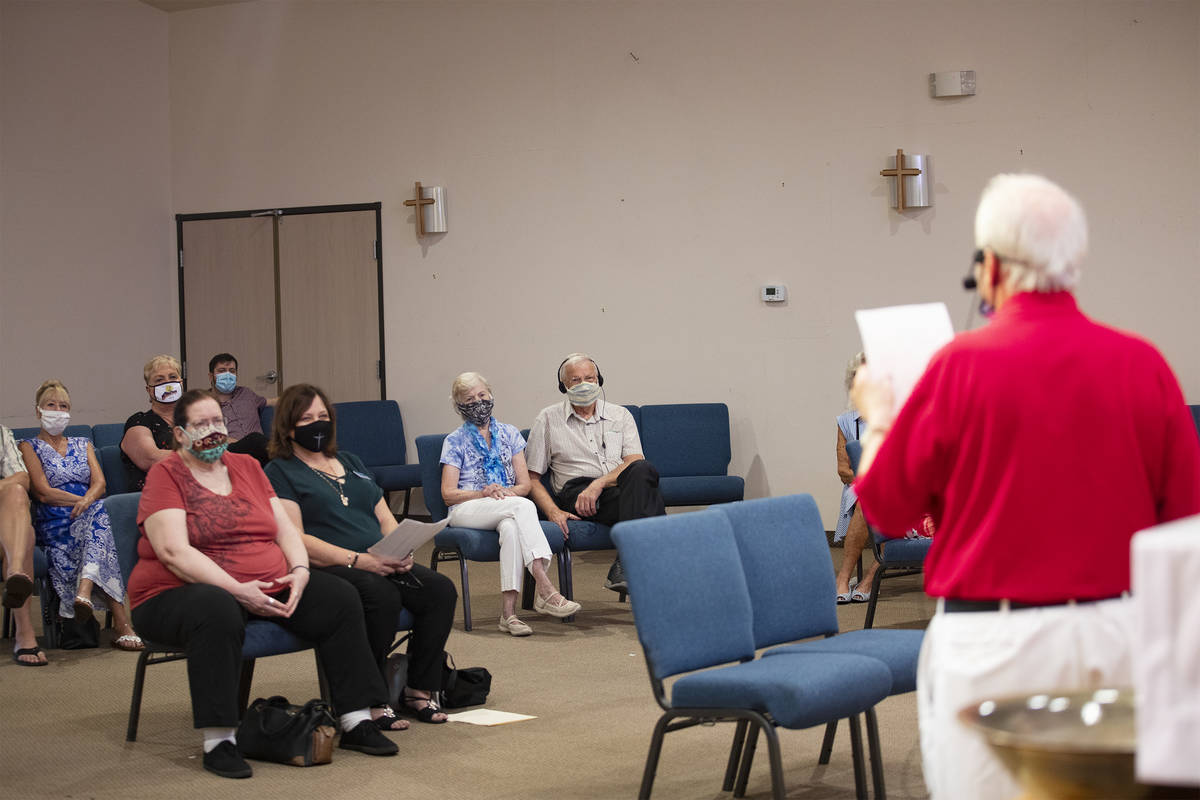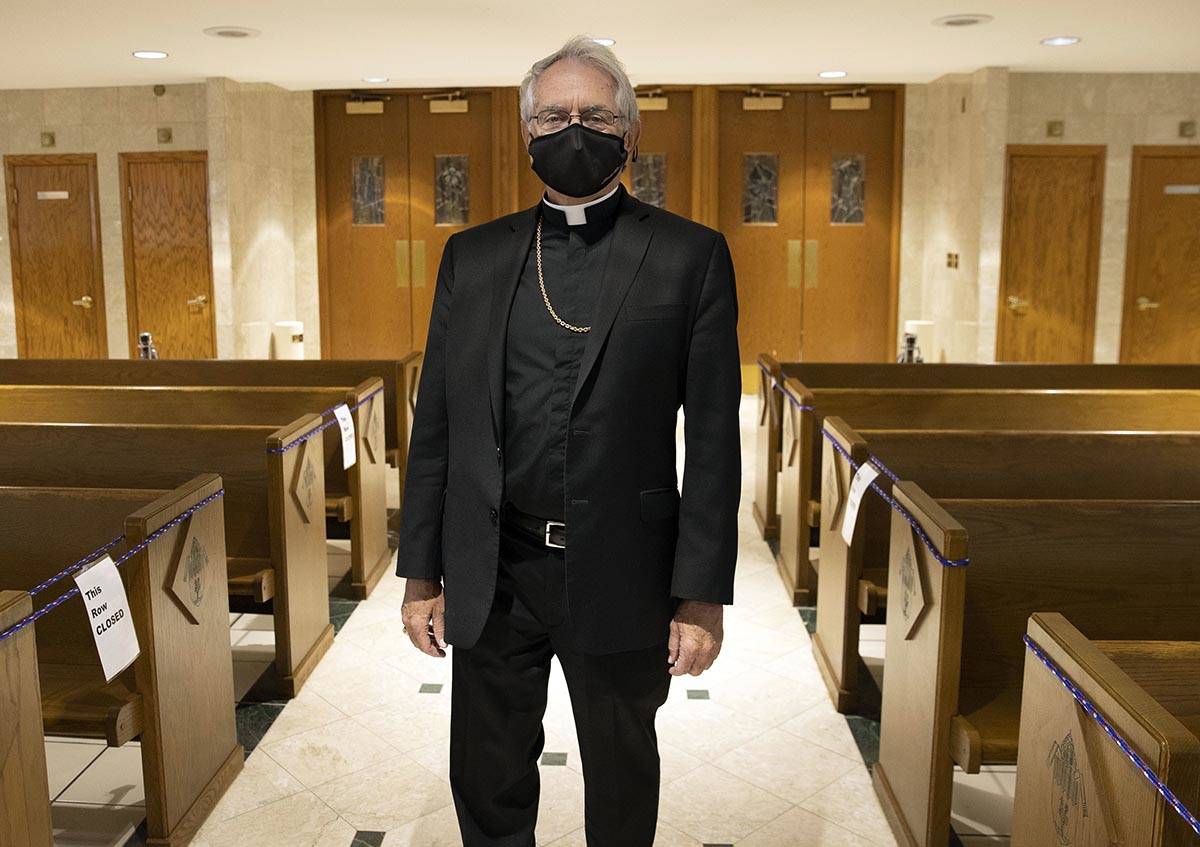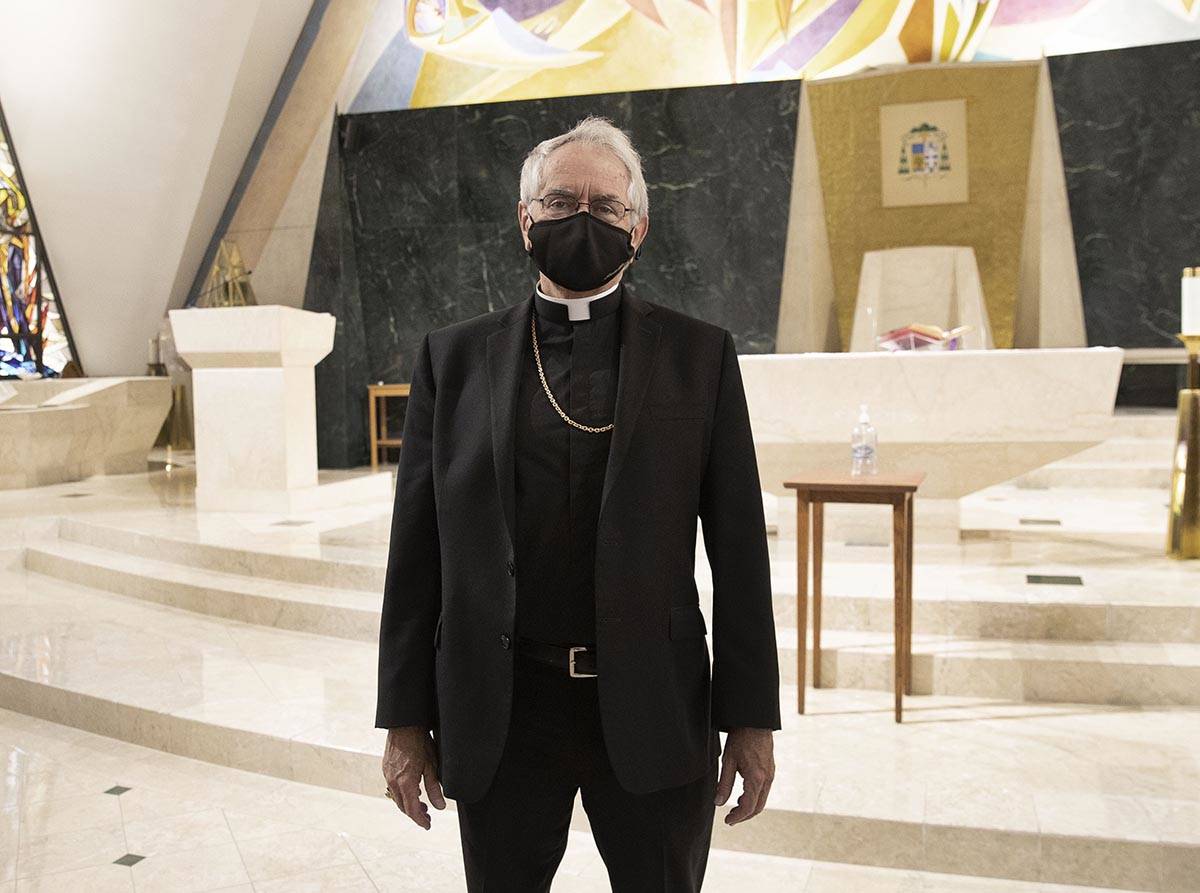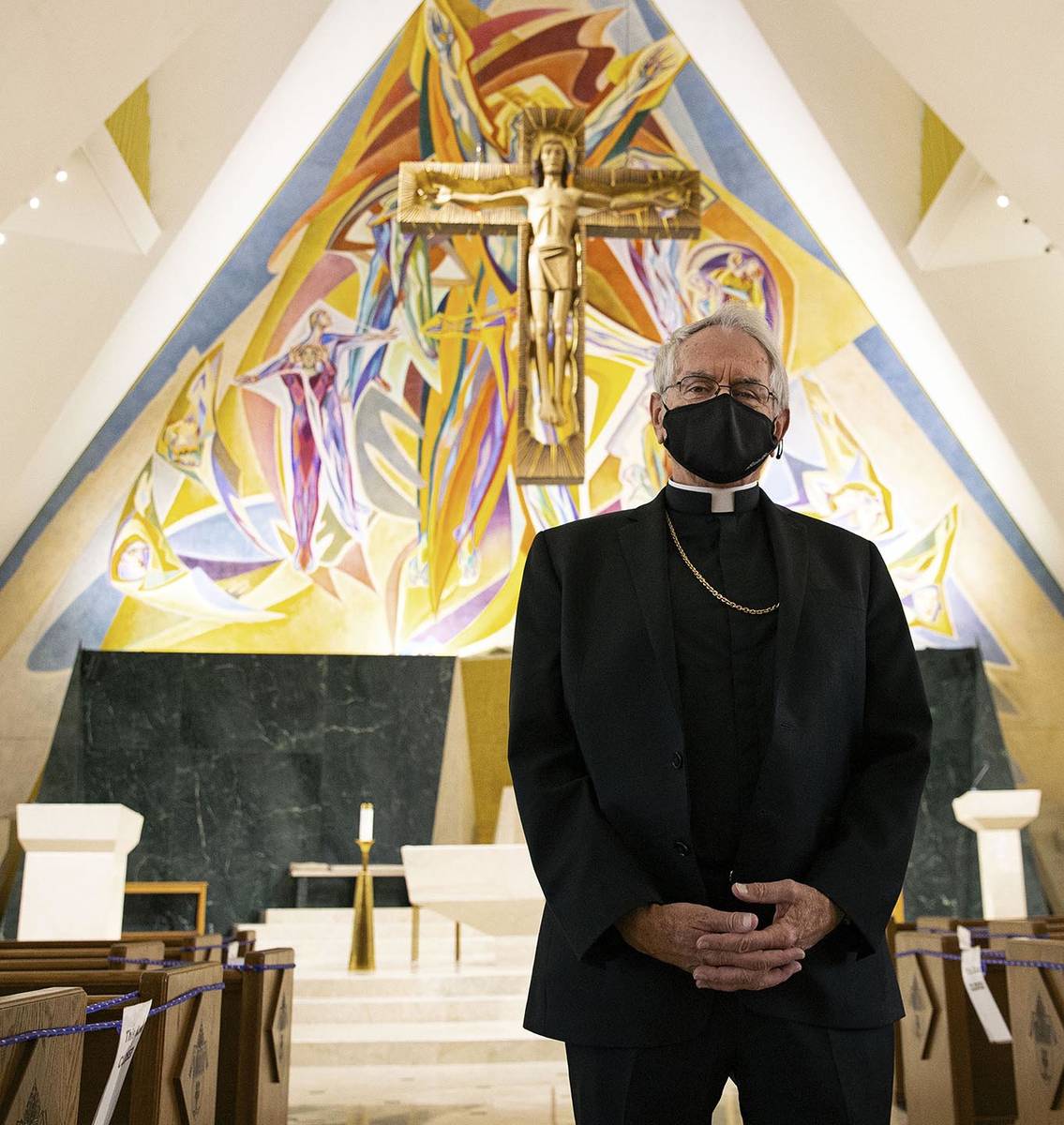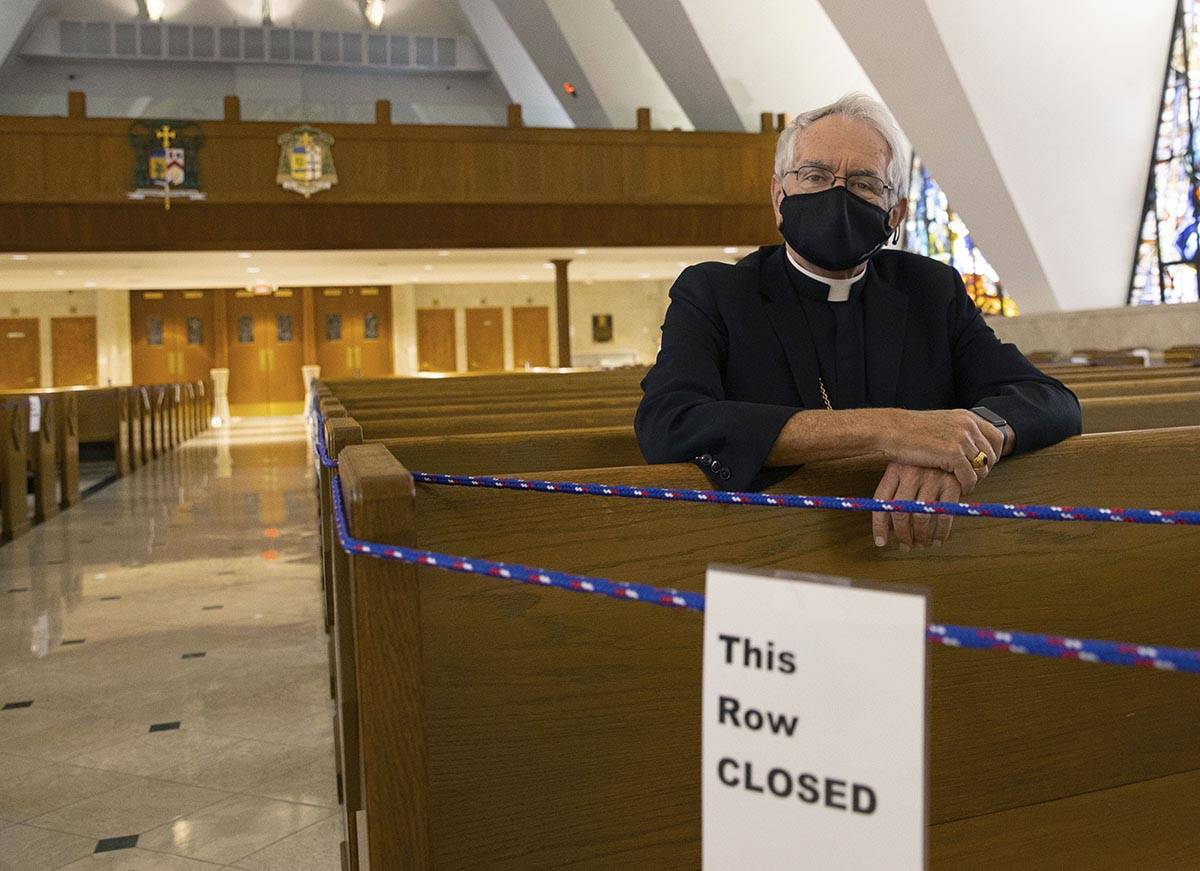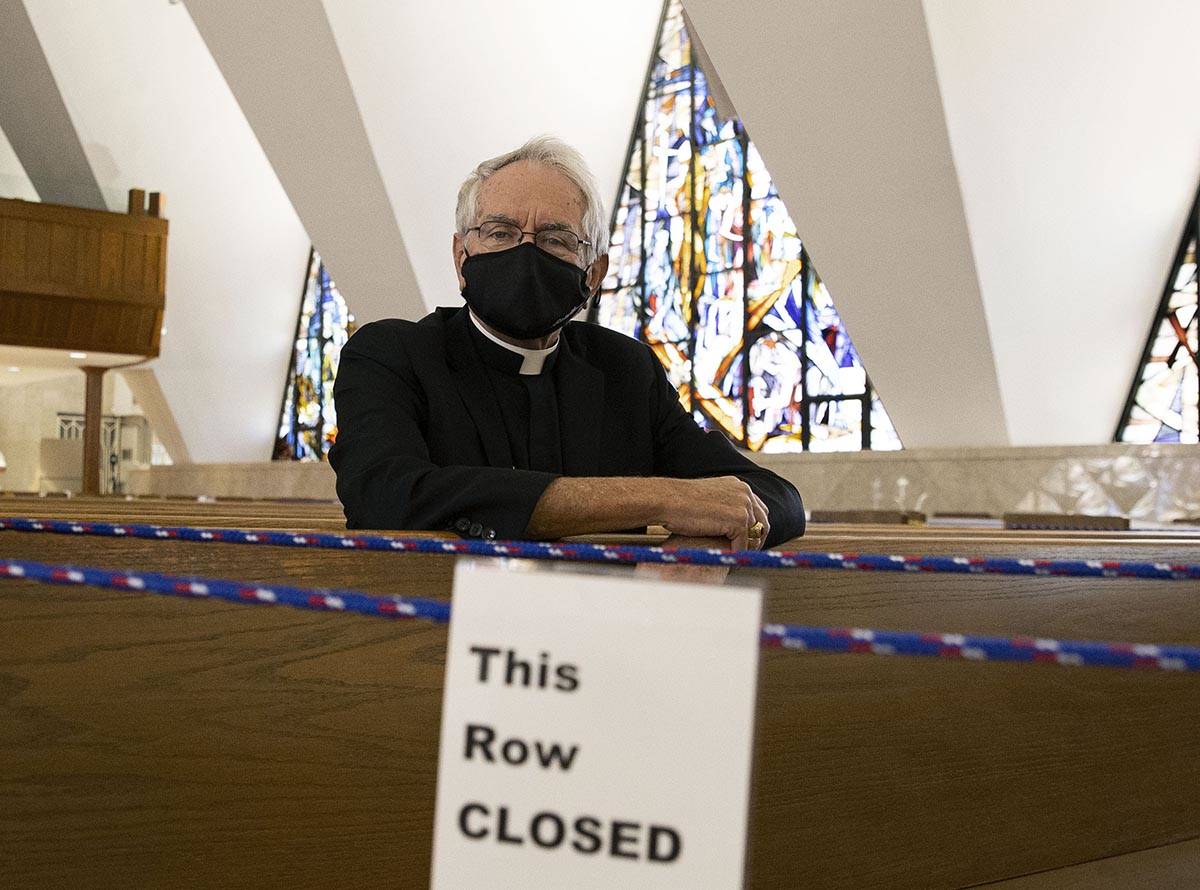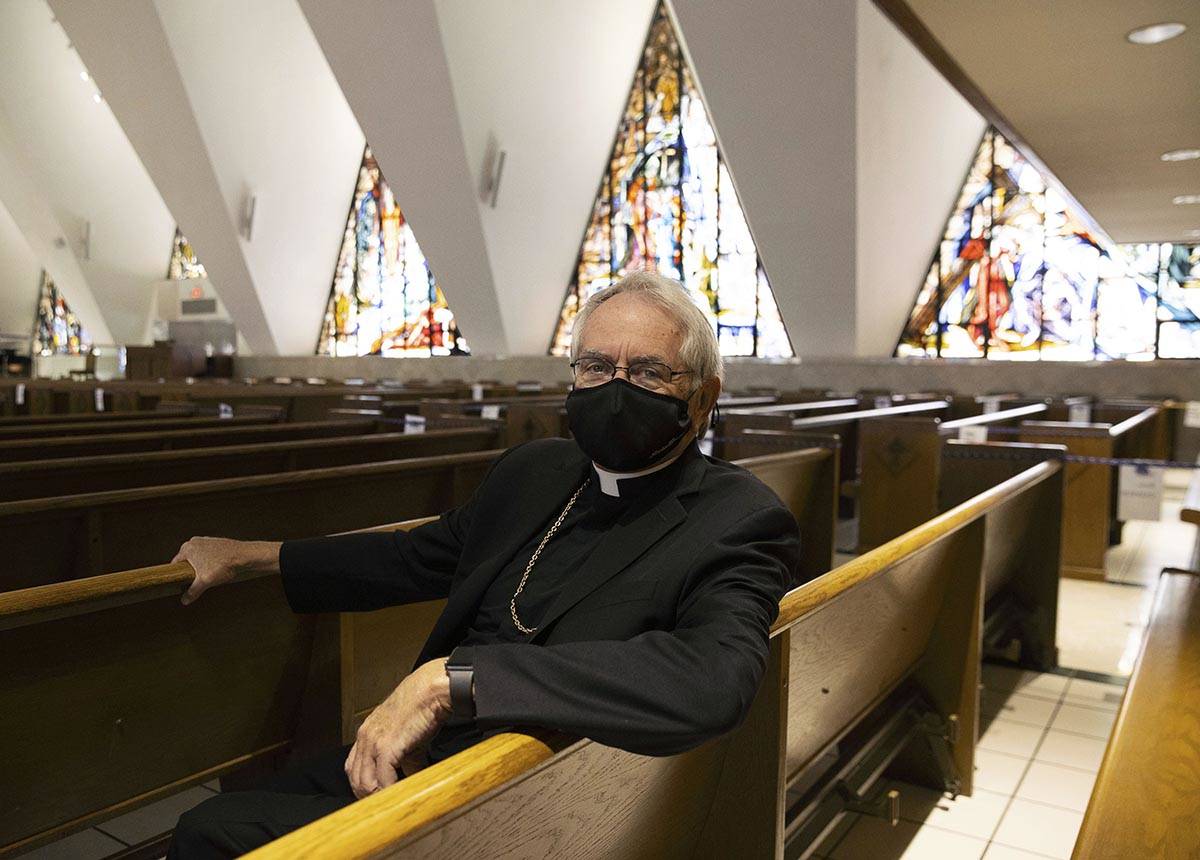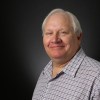Post-COVID worship to include more technology, slow return to ritual
Communion from a common cup. Handshakes and hugs. Even meeting for coffee and doughnuts after the service. All are worship practices that have disappeared over the past six months as the coronavirus pandemic hit Southern Nevada.
And it’s not over yet, so consider it a sign of faith that believers’ thoughts already are turning toward what worship might look like after COVID-19.
While clergy members here don’t expect post-pandemic worship to look much different than it did in March when houses of worship shut down, when the pandemic finally does end, worshippers may see a few coronavirus-related ripple effects.
More technology
The most noticeable change is technology’s impact, from livestreamed services to the use of Zoom and videoconferencing for Bible study and prayer.
A study by the Pew Research Center found that 46 percent of U.S. adults who watched religious services online or on TV in June and July started doing so even before the pandemic. However, 54 percent said they started watching during the pandemic.
“Many of the white, evangelical, nondenominational churches have already incorporated technology into worship services,” said Michael Ian Borer, an associate sociology professor and director of religious studies at UNLV. “So, I don’t think moving virtually was new to a lot of people.”
But for clergy and congregants for whom it is, technology probably will become a regular adjunct to post-COVID-19 worship. W. David O. Taylor, an associate professor of theology and culture for Fuller Theological Seminary in Pasadena, California, guesses that perhaps 10 percent of churches now using livestreaming and videoconferencing in worship will cut back or eliminate it post-pandemic, considering it “a barrier to, quote-unqoute, true worship.”
Another 10 percent will “choose to remain virtual,” Taylor said. “They’ll have discovered this new world for virtual worship and will find it works for them.”
The remaining 80 percent “will retain some facets of what they need to do, or will experiment,” Taylor said. “Having discovered the benefits of digital worship, they’ll incorporate them in some way into ministry.”
Rabbi Sanford Akselrad of Congregation Ner Tamid found that congregants appreciate video services, in part because “people longed for a sense of community and this was the only way to find it.”
He plans to continue incorporating technology into worship post-pandemic. Now, Akselrad said, “the challenge will be meeting the expectations of audiences” who have grown savvy about what a streamed or online service can be.
Bishop George Leo Thomas of the Diocese of Las Vegas said livestreamed Masses from parishes here have been seen all over the world, creating “a golden opportunity” for evangelism. He said he thinks and hopes pastors here will continue to livestream Masses after the pandemic ends.
The Rev. Paul Marc Goulet, pastor of the International Church of Las Vegas, is no stranger to using technology in worship, and he, too, expects its use in worship to increase across the denominational spectrum.
“Someone once said it’s about the message, not the method,” he said. “So methods can change, but the message is sacred.”
A return to the familiar
Some of the practices used in worship have changed or have been suspended over the past six months, and it seems likely they won’t be returning anytime soon.
“At least for the foreseeable future, I think we’ll continue to practice rigorous social distancing, elimination of the handshake of peace (and) Communion from the cup,” Thomas said.
Taylor said worshippers seek “an embodied experience” built upon such practices as singing, praying together and sharing Communion. With virtual worship, “you’re constantly reminded of all that this is not, but at least we have this.”
But, Taylor said, “I think when the time is right we’ll return and be even more appreciative of what we have, and that’s a good thing.”
The Outlook
The Rev. Linda Stanley, pastor of Zion United Methodist Church in North Las Vegas, says her congregation skews older and many congregants have medical conditions and no home internet service. So, she has been using telephone conferencing as a medium for Sunday worship.
Stanley expects telephone worship to continue as an option for congregants even after the pandemic ends. Bible study also is being done via teleconference, “and we’re working on doing some things with Zoom,” Stanley said. But “I don’t know what the future holds.”
The Rev. Paul Block, lead pastor at New Song Church in Henderson, has tried several novel approaches to ministry during the pandemic, including drive-by Communion, in which congregants watch a streamed service and then drive to the church for Communion.
“I don’t think we can predict what our church will look like in a year,” Block said, but “Christian faith is rooted in hope for the future.”
Ultimately, Thomas said, “I don’t think it will be dramatically different. People want to be together to become a community. It’s central to who we are.”
But Thomas also expects a post-pandemic adjustment to take time.
“The fear factor is very high, and that’s why I don’t see going from zero to 60 in a single week. It’s going to happen, but I think it’s going to be an incremental thing that is cautiously driven by medical metrics.”
Goulet doesn’t know what a new normal will look like. But, he said, “hopefully it’s a better normal.”
Contact John Przybys at jprzybys@reviewjournal.com. Follow @JJPrzybys on Twitter.



